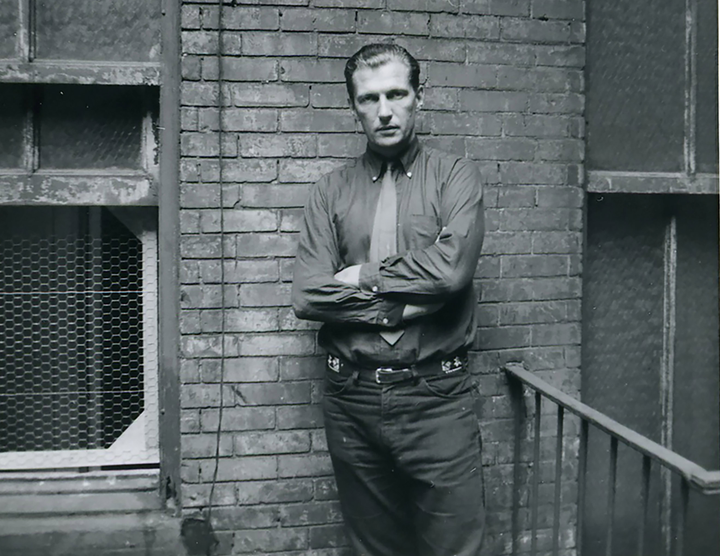JOHN WESLEY
John Wesley (1928-2022) created an unparalleled body of work that delves deeply into the American psyche. Utilizing a comic-strip style and rigorous composition, Wesley's paintings are profoundly personal and enigmatic, tapping into human fears, joys, and desires. His meticulous line work, reflective color palette, and photo-based meta-representations set him apart, positioning his art as a reaction to, rather than an extension of, these movements. Wesley was born in Los Angeles, California, and at 24, he began his career as an illustrator in the Production Engineering Department at Northrop Aircraft, where he converted blueprints into drawings and immersed himself in the art scene, forming connections with prominent minimal artists such as Donald Judd and Sol LeWitt. In 1960, he relocated to New York and took a job as a postal clerk, incorporating symbols like the shield-like postage stamp and his employee badge into his artwork. His artistic practice later broadened to include a variety of enigmatic iconographies.
Since the 1960s, John Wesley's artwork has been displayed by museums across the globe. Significant retrospectives of his work have been hosted at prestigious institutions such as the Stedelijk Museum in Amsterdam, Museum Ludwigsburg, PS1 MoMA in Long Island City, Harvard University Art Museums, Museum Haus Lange in Krefeld, the Chinati Foundation in Marfa, and the Fondazione Prada at the Venice Biennale. Since 2004, the Chinati Foundation in Marfa has featured a permanent gallery dedicated to Wesley's paintings, reflecting Donald Judd's vision. In 2014, Wesley was commissioned to create a public art installation for the High Line in New York City.

